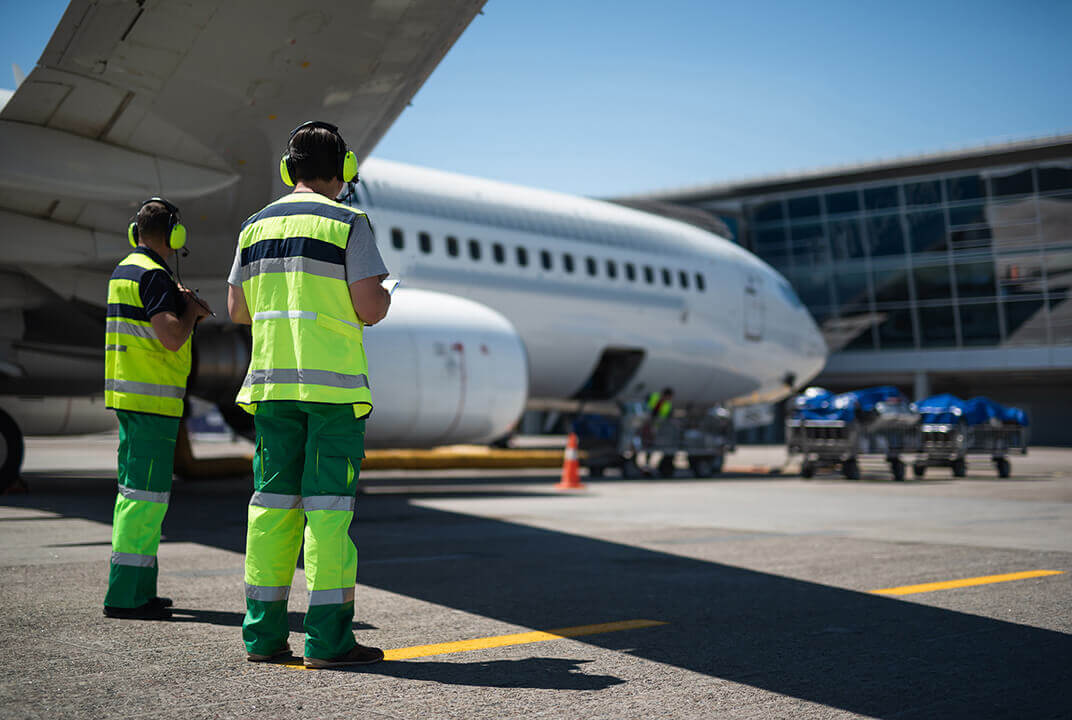Insight | The complete connected aircraft
Select Language
The complete connected aircraft
High-speed internet to cockpit and cabin will transform passenger experience, airline revenues and operations. Inmarsat is leading the way
These days, there’s a great deal of excited talk about how everything is becoming connected. Usually, this centres around the ‘internet of things’ and includes domestic appliances like smart fridges and ovens – sometimes it even extends to cars. But outside the aviation industry it rarely mentions the connectivity revolution that is now taking place on aircraft.
Our world is increasingly driven by – and dependent on – data. But for technical and regulatory reasons, aircraft have lagged behind. Now, aviation is catching up – and very quickly. The early ambitions for inflight connectivity are rapidly becoming a reality and every month brings new developments and new announcements.
It’s an incredibly exciting time. We already know that connectivity will improve the passenger experience and unlock new ancillary revenue streams. We know it will boost operational efficiency, and enhance CNS (communications, navigation and surveillance for air traffic management). We know that ultimately it will enable more aircraft to fly safely in the same volume of sky in order to meet ever-increasing demand. In short, we are gaining our first idea of what a fully connected aviation industry might look like.
Download the white paper
Inmarsat Aviation - The correctly connected aircraft
Unlocking the value of connectivity
Demand is growing fast. Let’s take two statistics. In our 2017 Passenger Survey, one is that six in ten flyers viewed inflight Wi-Fi as a necessity rather than a luxury. Increasingly, passengers’ lives on the ground are “always-on” and they want this connected experience in the air. The second is that the number of people who fly is continuing to grow. By 2034, it will have more than doubled to seven billion passengers a year.
In terms of the sort of value that connectivity can unlock, the case is very clear too. In 2018, connected ancillary sales will be worth $784m to airlines. New, independent research from the London School of Economics (LSE), the first to analyse and forecast the inflight broadband market, suggests this will grow to $28.2bn annually by 2032, an increase of over 3,600%, This figure takes in sales of Wi-Fi services themselves, but also inflight digital engagement (via everything from entertainment to data-driven bespoke services) which will enhance and improve the entire passenger experience. Airlines that do all this well will stand out from their peers, enjoy greater customer loyalty and increase their market share.
A new era in operational efficiency
Fast, reliable cabin broadband is just one part of the equation though. Connectivity will change the entire industry from nose to tail. In the cockpit, an IP-based flight deck will mean that pilots get real-time information. This will result in efficiency savings both in flight and on the ground. Examples of how this could work include everything from being able to avoid unsettled weather (meaning better fuel economy and a more pleasant flight) to predictive maintenance and airport operations (meaning faster turnarounds).
The huge amounts of data gathered by connected aircraft will allow better fleet management by driving efficiencies in areas such as engineering and scheduling. In the way that companies such as Amazon have used the vast volumes of data they gather to revolutionise their supply chains, so too airlines will be able to transform the logistics around flying. The potential savings are many billions of dollars and it’s likely that there will savings we do not even know about yet.
Connected aircraft will assure higher standards of safety and airspace management, again because of better real-time information and communications. This data and communications must be completely secure. Inmarsat’s proprietary technology segregates passenger cabin data from flight deck data. In fact, ICAO recognises that there are three separate data “domains”.
The first is the Passenger Information and Entertainment Services Domain (PIESD). Here, Inmarsat Aviation offers seamless, high quality, low-cost connectivity through its GX Aviation or European Aviation Network services. The second is the Aircraft Information Services Domain (AISD). This is data which concerns the operation of the aircraft, but does not have a bearing on control of the aircraft. It’s the next level up in terms of security and functionality requirements. Finally, there is the Aircraft Control Data Domain (ACD). This is mission-critical data and requires the very highest security and quality of connectivity, such as is provided through Inmarsat’s SB-S operations and safety service, which provides real-time visibility into global airline operations. Understanding the differences between these data domains, and how to best support them with a connectivity solution design, is key to the complete, ‘correctly’ connected aircraft.
In a nutshell, this means the woman using Facebook in seat 21A and the pilot speaking to air traffic control from the cockpit use completely different services. The level of security and the way the data is prioritised differ considerably, although the Facebook data is very safe if the connection is reliable.
Airlines should support all three types of ICAO-defined data domains to access and realise the full value of the complete connected aircraft – both maximising revenue and making operational costs savings. The three data domains each require a specialist type of connection – no one cabin or cockpit broadband product can satisfy all three types of data requirements. That’s why airlines need to partner with an aviation connectivity expert who can support all three sets of requirements, and can design a cross-aircraft solution that best supports the airline’s needs.
Why Inmarsat Aviation?
Inmarsat Aviation is not the only provider of next-generation inflight connectivity – but it’s the only provider of complete connectivity. So, what’s the difference?
Unlike other providers, Inmarsat Aviation owns and operates proprietary satellite networks to support different services. This is the company’s core business. Virtually all other providers are just reselling bandwidth, whereas Inmarsat offers a complete connectivity solution. This is supported by a unique applications ecosystem, data and analytics platforms, and end-to-end managed service delivery. Inmarsat can offer airlines everything from retail consultancy and IFE partnerships to engineering and design services.
All this makes for better quality, more reliable services. Inmarsat’s networks are designed for reliability and seamlessness, and to provide global coverage of all commercial flight routes. Another crucial aspect of being a satellite owner, rather than a reseller is that the company is much less subject to the vagaries of the market. The company sets its own prices and is not competing with other resellers for bandwidth. If more bandwidth is needed in a certain area, Inmarsat can meet demand by redirecting capacity in its existing networks. In the longer term, it can plan future launches of satellites to cover areas where demand is growing.
Inmarsat is also a global leader in this area with an unrivalled depth and breadth of expertise built over 25 years. Inmarsat has close partnerships with global aviation standards authorities, leading technology businesses and many major airlines. More than 12,000 aircraft currently depend on its services for every aspect of ground to plane communication across all areas – passenger, operational and safety. GX Aviation contracts have already been signed to install IFC in 1,300 aircraft with customers including Avianca, Qatar Airways, Lufthansa Group, Air New Zealand and Singapore Airlines.
Getting it right
While connecting an aircraft could be seen as simply installing broadband and flicking the on switch, the complete connected aircraft is a more complex affair. It’s part of a vital ecosystem which stretches from satellites to retailers to regulators and from mobile phone companies to entertainment providers. To realise the full value of connectivity, it has to be done properly.
Inmarsat Aviation is the business with this reach. Other providers will offer a great deal on broadband in the passenger cabin or cockpit connectivity. But they won’t be able to advise on best practice on the most secure and cost-efficient ways to manage all passenger, operations and safety data. They won’t be able to give you a full suite of capabilities that covers everything from pioneering new retail strategies to anticipating regulatory requirements ten years down the line.
Without designing a connectivity solution that supports the full suite of capabilities within key service domains, airlines stand in danger of missing out on the total benefit. To put it simply, a connected aircraft is easy to obtain, but the correctly connected aircraft is a more elusive asset. Inmarsat Aviation is ready to help airlines realise the full potential of a correctly connected fleet. With Inmarsat, the complete connected aircraft is now a reality for airlines.


